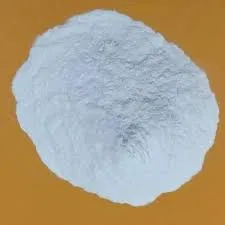
Nov . 19, 2024 00:12 Back to list
Exploring the Structure and Applications of Hydroxyethyl Cellulose in Modern Industry
Understanding Hydroxyethyl Cellulose Properties, Uses, and Formulation
Hydroxyethyl cellulose (HEC) is a non-ionic, water-soluble polymer that plays a significant role across various industries, including pharmaceuticals, cosmetics, food, and construction. Derived from cellulose, a naturally occurring polymer, HEC is modified through the addition of hydroxyethyl groups, enhancing its solubility and functional properties. This article explores the formulation of HEC, its unique properties, and the diverse applications stemming from its use.
Chemical Structure and Formulation of HEC
The formula for hydroxyethyl cellulose can be represented by the repeating unit derived from anhydroglucose, which maintains the basic structure of cellulose while incorporating hydroxyethyl ether groups
. The average molecular weight of HEC can vary, typically ranging from 90,000 to 1,200,000 daltons, depending on the specific grade and application.The synthesis of HEC involves the etherification of cellulose in the presence of alkali and ethylene oxide. The degree of substitution, which indicates the number of hydroxyethyl groups attached to the cellulose backbone, influences the solubility and viscosity of the final product. Higher degrees of substitution will generally lead to increased viscosity in aqueous solutions.
Properties of Hydroxyethyl Cellulose
HEC exhibits several distinctive properties that make it an attractive ingredient in various formulations. One of its primary characteristics is its ability to form viscous solutions in water, making it an effective thickening and gelling agent. It is also stable across a wide range of pH levels and temperatures, which enhances its versatility.
Additionally, HEC has excellent film-forming properties, allowing it to create durable and flexible films when dried. It is non-toxic, biodegradable, and compatible with many other ingredients, further broadening its application spectrum. Moreover, HEC demonstrates good water retention and foam stabilization, particularly useful in personal care products.
hydroxyethyl cellulose formula

Applications Across Industries
1. Pharmaceuticals In the pharmaceutical realm, HEC is often used as a thickening agent and emulsifier in topical ointments and gels. Its film-forming ability contributes to controlled release formulations, making it an essential component in certain sustained-release systems.
2. Cosmetics and Personal Care HEC is frequently incorporated into shampoos, conditioners, lotions, and creams for its thickening and stabilizing properties. It enhances the texture and appearance of products, improving user experience while ensuring even distribution of active ingredients.
3. Food Industry In food products, HEC acts as a stabilizer and emulsifier, preventing separation of ingredients and improving texture. It can also impart a desirable mouthfeel, making it a common inclusion in sauces and dressings.
4. Construction In the construction industry, HEC is utilized in mortars and grouts due to its water retention properties, which aid in improved workability and bonding characteristics.
Conclusion
Hydroxyethyl cellulose is a versatile polymer that has carved a niche in numerous industries due to its unique properties and wide-ranging applications. As research continues to explore its potential, HEC is likely to remain integral in developing innovative products that enhance performance and user satisfaction. Whether in pharmaceuticals, cosmetics, or food, hydroxyethyl cellulose exemplifies how modifications to natural polymers can yield significant advancements in technology and product formulation.
-
Versatile Hpmc Uses in Different Industries
NewsJun.19,2025
-
Redispersible Powder's Role in Enhancing Durability of Construction Products
NewsJun.19,2025
-
Hydroxyethyl Cellulose Applications Driving Green Industrial Processes
NewsJun.19,2025
-
Exploring Different Redispersible Polymer Powder
NewsJun.19,2025
-
Choosing the Right Mortar Bonding Agent
NewsJun.19,2025
-
Applications and Significance of China Hpmc in Modern Industries
NewsJun.19,2025







